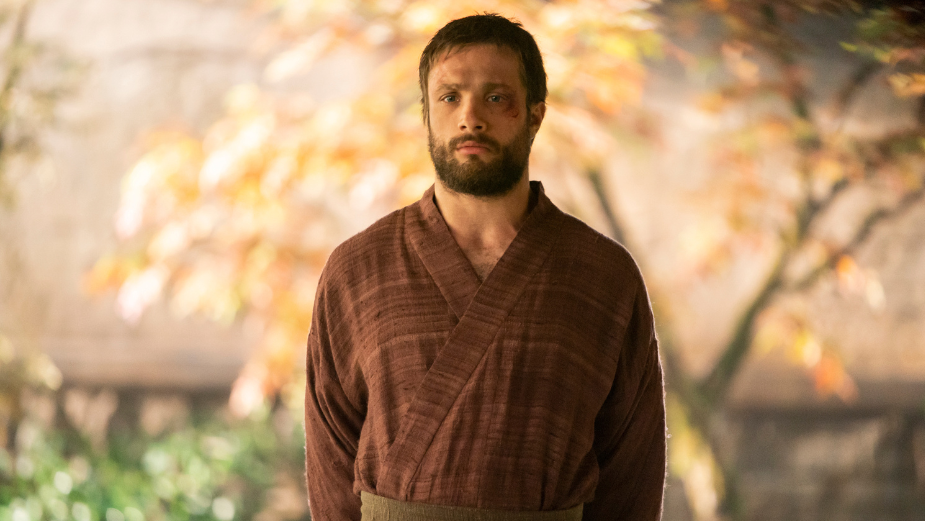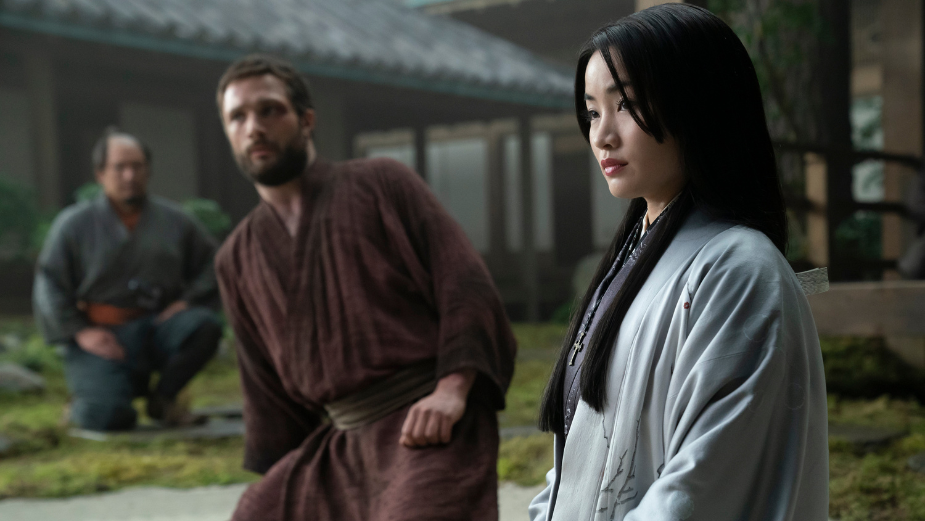
Cutting the Tension: How Shōgun’s Epic Edit Brought an Intense Narrative to Life

The Erasmus is drifting aimlessly across a foreign sea. Low on supplies, crew, and hope, the great Dutch trading ship is surely doomed. But John Blackthorne, one of the final crew members yet to succumb to scurvy, isn’t ready to give up. On the other side of a wall of mist, he believes the ship is about to hit land. Specifically, the land of feudal Japan - a nation which Blackthorne’s colleagues refuse to believe exists. Whilst Blackthorne’s prayers are eventually answered as The Erasmus washes up on Japanese shores, what he can’t know is that this is only the beginning of his story.
So begins Shōgun, an adaptation of James Clavell’s 1975 novel now streaming across multiple platforms worldwide. The show has become an immediate critical success, described by The Guardian as “beautiful, intellectual fare that amply rewards your full attention”. It’s also been a labour of love for the talent behind the scenes, as well as on-set. Editor Aika Miyake first joined the project in 2021, and made it her mission to instil a sense of epic scale alongside the story’s gripping, human-driven narrative.
To find out more about the decision-making process behind the show’s edit, LBB spoke with Aika…
LBB> Aika, what kind of vision did you have at the outset of this project in 2021 - and to what extent does it align with the finished show?
Aika> Before diving into this project, I knew it was a major show featuring Hiroyuki Sanada - who is renowned in Japan and abroad - but I didn't fully grasp its magnitude at first. As we began receiving dailies and I started piecing scenes together, the sheer scale of the production became apparent.
The authenticity and precision in portraying Japanese culture was impeccable, and the production and acting performances were at the highest level. Being the only Japanese editor on this project, I felt the responsibility to ensure that this attention to detail carried through to the finish line through editing. During the first months of working on the project, I battled with a sense of imposter syndrome, constantly questioning my own abilities. However, instead of letting it break me, it motivated me to work even harder to perfect my edits.
I couldn’t be prouder now that the show is out in the world. My expectations were already high from the start, but the final effect has certainly surpassed them.

Above: John Blackthorne comes to terms with his new world in FX's Shōgun. Image credit: FX
LBB> We understand that this is your debut in narrative longform. How similar was the editing process in comparison to your commercial work - and to what extent was it different?
Aika> The process itself is quite similar. I review the dailies, immerse myself in them, select the best ones, and piece them together. The most obvious difference lies in the length of the material, which requires patience and a different approach to organising your selects.
Something unique to Shogun is that many ‘battles’ unfold within intense political conversations rather than in physical fights. Episode Two features two of those significant scenes, both lengthy and intense, with Japanese translations integrated. I ensured the pace remained dynamic, engaging, and intense while making sure all information and emotion was digestible for the audience. It was such a pleasure to collaborate with this talented cast, and their nuanced performances were key to editing these scenes.
The key difference lies in the duration, both in terms of the footage length and the post-production timeline. I dedicated 19 months to this show, with the majority of the editing taking place remotely from my home, often alone with my two cats. I navigated through the spectrum of emotions - excitement, anxiety, and the inevitable highs and lows - pretty much on my own. Maintaining mental resilience was crucial in the long haul, and my exceptional assistant editor, Beth Cohon, provided me with invaluable support. I am also grateful to our post-producer, Jamie Wheeler, who created a safe and supportive work environment. She consistently fostered a sense of calmness and certainty amidst the challenges. Lastly, the true highlight of this 19-month journey was the amazing friendship and comradery forged with one of the other editors, Maria Gonzales, which is typically rare when working on short-term commercial projects.

Above: Many conversations in Shōgun play out with the tension and intensity of a sword fight. Image credit: FX.
LBB> We've also heard that you're particularly passionate about editing film together with music. Did you get to explore that at all for Shogun?
Aika> In narrative editing, there are many more moments without music in the scenes - so it often feels like I’m creating the music with the dialogue and the visuals. I am building those smaller waves of ‘music’ to build a bigger one, eventually shaping the entire episode. While in commercials and music videos, cuts can sometimes be hidden within rhythms, in narrative editing each cut becomes more apparent and, therefore, has to be more precise.
I also want to mention that working with the composing team, Atticus Ross, Leopold Ross, and Nick Chuba, was a real pleasure. They provided us with over 30 tracks of original scores before we began editing, and each track already had so much thought put into it, which was extremely helpful in developing each scene. Additionally, they incorporated Japanese Gagaku instruments and monks singing in a contemporary manner, which effectively transported Shogun into a realm of its own.
LBB> From what we've seen of the show so far, it feels like the story plays out with a real intensity. As an editor, what do you do to build that sense of high stakes and tension?
Aika> There is one particular scene in which I used the sound of rain to both build and release tension. I intensified the sound of rain depending on where in the scene it was. Sometimes it’s a subtle sound of rain but, in other parts, I included thunder and more aggressive rain. I would completely drop the music to let the scene breathe with an almost tear-like rain sound in the background and then slowly build the energy back up toward the end of the scene.
For this scene, instead of using a more elegant and realistic sound design, I deliberately opted for a rough-edged approach reminiscent of old samurai movies. As a result, it became one of my favourite moments in the show - as it is very intense but also deeply emotional.
LBB> Were there any other stylistic qualities - like tone or mood - which you were seeking to convey through your editing for Shogun?
Aika> The overall tone has a sense of epicness and stoicism, making the show appear as an action-packed drama at first glance. However, it also harbours a subtle layer of comedy. Initially, I approached certain scenes with a strict dramatic perspective, only to recognise later that they contained elements of awkward humour.
Consequently, I adjusted the reactions and pacing, occasionally incorporating elements such as birds tweeting in between to accentuate these comedic moments subtly.
LBB> What was the biggest challenge you encountered on Shogun, and how did you overcome it?
Aika> The most challenging aspect of this project was condensing over 100 minutes of initial cuts to under 55 minutes while preserving the integrity of the story. The nature of translating the dialogue from English to Japanese nearly doubled the length already, and we also received extensive coverage of the details which only added more time to the initial cuts.
I had to navigate showcasing authentic gestures accurately while also omitting them in places where they were unnecessary for the story. For instance, bowing is a huge part of Japanese culture - and while I do include it when it’s important, I found ways to omit it occasionally to save time for other crucial moments. I find it similar to the phone conversations on TV or in films, where you rarely hear exchanges like "Hello, how are you?", and they typically cut to the chase. Bowing was something similar in this context.
LBB> And following Shogun, is there a particular type of project - either short or long form - that you'd be especially keen to tackle in the future?
Aika> I thoroughly appreciate a diverse range of projects, spanning from short to long formats, scripted to non-scripted content. I enjoy the challenges each new project brings and find satisfaction in learning something new with every opportunity. When presented with a compelling story, I always aim to find the best way to tell that story.













